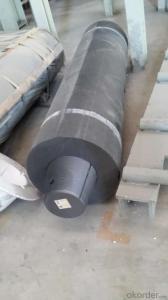When we talk about the world of batteries and energy storage, one material that always pops up is graphite. It’s like the unsung hero of the energy world, quietly doing its job and making sure our devices keep humming along. But what exactly is graphite, and why is it so special? Let’s dive into the fascinating realm of graphite as an electrode material and explore its properties and uses.
First off, graphite is a form of carbon, just like diamond and charcoal. But unlike its sparkly cousin, diamond, graphite is dark, flaky, and has a slippery feel. It’s also an excellent conductor of electricity, which is why it’s perfect for use in batteries. Imagine a material that can slide smoothly under your fingertips and also power your phone – that’s graphite for you!
One of the key properties of graphite is its ability to hold a charge. It’s like a tiny energy storage unit, ready to release power when needed. This is due to its layered structure, where sheets of carbon atoms are neatly stacked on top of each other. These layers can slide past one another, allowing for the movement of ions, which is crucial for the charging and discharging process in batteries.
But graphite isn’t just about holding a charge; it’s also about releasing it. When it comes to discharging, graphite has a relatively high capacity, meaning it can provide a lot of power in a short amount of time. This makes it ideal for applications that require quick bursts of energy, like your smartphone or laptop.
Now, let’s talk about the life of a graphite electrode. It’s not just about how much power it can hold, but also how long it can hold it. Graphite has a high cycle life, which means it can be charged and discharged many times without losing its ability to store energy. This is a big deal because it means batteries with graphite electrodes can last longer, saving you time and money on replacements.
But there’s more to graphite than just its ability to store and release energy. It’s also incredibly stable. Graphite doesn’t react easily with other substances, which means it’s less likely to break down or cause unwanted chemical reactions in a battery. This stability is a major plus for safety, especially when you consider the sometimes volatile nature of batteries.
Another cool thing about graphite is its flexibility. It can be made into different shapes and sizes to fit various applications. Whether it’s a thin film for a flexible battery or a thick chunk for a high-capacity power bank, graphite can adapt to the task at hand.
So, where do we find this wonder material? Graphite is mined from the earth, primarily in countries like China, India, and Brazil. It’s then processed and purified to ensure it’s ready for use in batteries and other applications.
But graphite isn’t without its challenges. One of the main issues is its limited availability. With the increasing demand for energy storage, the supply of graphite can sometimes struggle to keep up. This has led to research into alternative materials and methods to produce graphite more efficiently.
There’s also the environmental impact to consider. Mining and processing graphite can have negative effects on the environment, which is why many companies are looking into more sustainable ways to produce this valuable material.
Despite these challenges, graphite remains a popular choice for electrode materials due to its unique combination of properties. It’s reliable, efficient, and has stood the test of time in the energy storage industry.
In conclusion, graphite is more than just a black and white material; it’s a multifaceted powerhouse in the world of energy. Its properties and uses are vast and varied, making it an essential component in our quest for better and more sustainable energy solutions. So next time you’re powering up your device, give a thought to the humble graphite electrode – it’s the unsung hero that keeps your world charged and connected.

